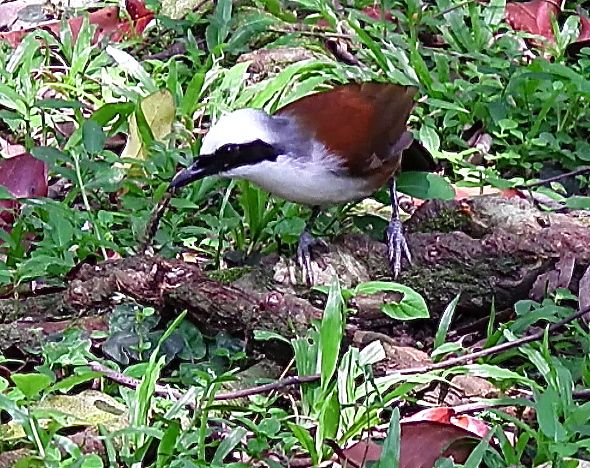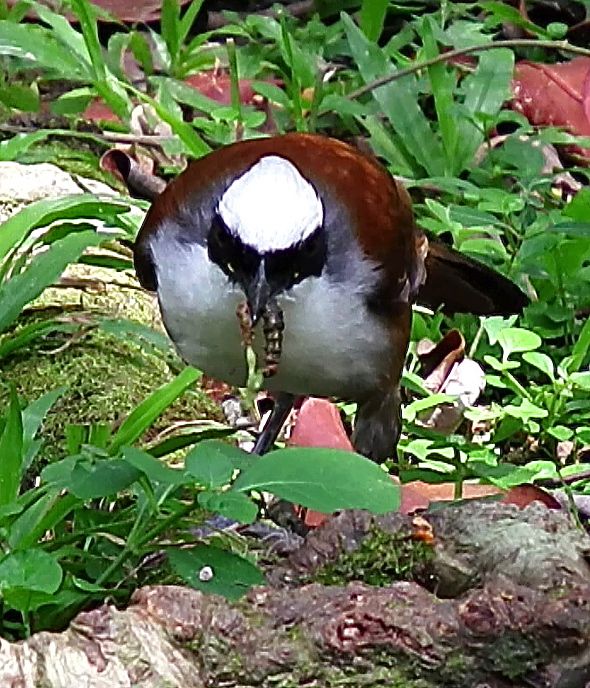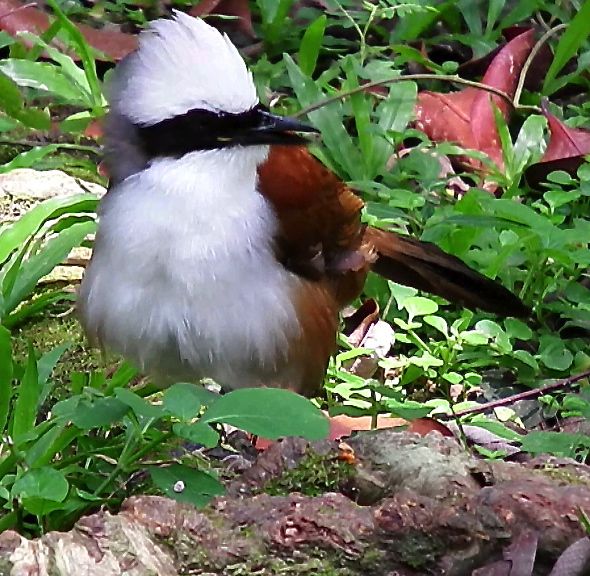“On the 22nd September 2014, I was observing a small group of White-crested Laughingthrushes (Garrulax leucolophus) foraging at a local park when a particular individual caught my eye. It had just found a feisty moth caterpillar which was covered in irritant hairs and stinging spines. My curiosity was aroused and I wondered how this bird would surmount the walls of self defense put up by the wriggly and spiky caterpillar.
“Firstly, the laughingthrush used the tip of its beak like a pair of forceps and gripped the caterpillar at a safe distance (above). It then smeared the caterpillar vigorously against exposed earth. When it felt that there was insufficient exposed soil, it moved aside fallen leaves to expose dirt space for additional rubbing.
“Satisfied that most of the hairs and spines of the caterpillar had been removed, it then brought the ‘undressed’ caterpillar to an exposed root. The laughingthrush then began to swing and bash the caterpillar against the dense root repeatedly (above).
“So after stripping and swinging the spiky caterpillar, this tasty snack was finally certified as being safe to swallow (above).
“Upon ingesting the limp and lifeless larva, the laughingthrush certainly had the last laugh in this battle between predator and prey, so its white crest was erected in triumph (above).
“A summary video of the laughinghthrush systematically tackling this tricky treat may be previewed here:”
Dr. Leong Tzi Ming
Singapore
13th November 2014













2 Responses
Wow, lots of work to prepare a caterpillar for dinner!
Thank you for your observations. I observed a Grey Shrike-thrush doing the same thing, yesterday in the Blue Mountains Australia and wondered if it was removing the hairs from the caterpillar before eating it. I will publish your observations along with mine in Blue Mountains Conservation Society newsletter, April 2016.